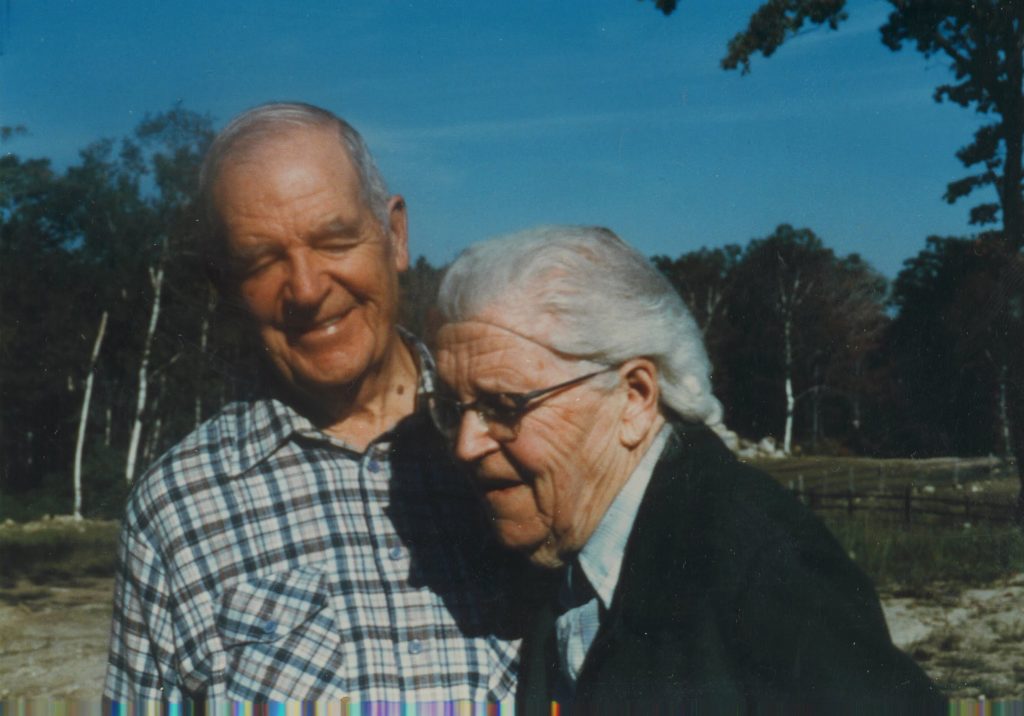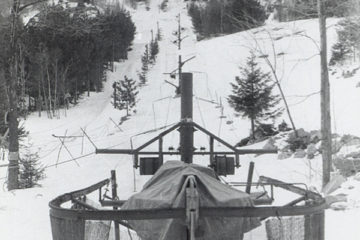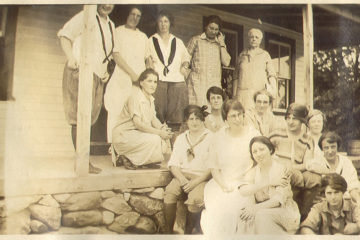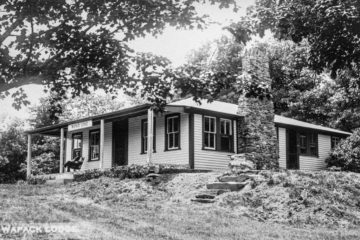Marion Davis and the Wapack Lodge
We hope you’ll enjoy the following excerpt by Marion and memories from friends and family as a peek into Marion’s life and the origins of the Wapack Trail and Lodge.
Making the Wapack Trail and Lodge
Shortly before her death in 1986, Marion Davis recorded her memories at the encouragement of her brother, Walter Buck. The following is an excerpt from the 43 page transcript of that recording.
In 1922 Albert Annette came over to the farm [in Rindge]. Frank and I were haying down in the field. He wanted to talk with us so we came up and sat on the piazza. From the farm you had a wonderful view of the Temple Mountain range and over into the pastures you could see there. We sat and talked to him. Why he had come he said he knew Frank knew all of that area because he had pastured cattle so many years. Allan Chamberlain was up to The Ark and he had been pretty busy writing a story about Monadnock Mountain [The Annals of Grand Monadnock] and he had talked with him about the feasibility of a trail over the range from Watatic through over the Temple Mountains. He had suggested to him that Frank Robbins was the man that would know how to do a thing like that, so he had come over to see him. He wanted to know if he would meet with Chamberlain and go over the trail so that’s what started the trail business.
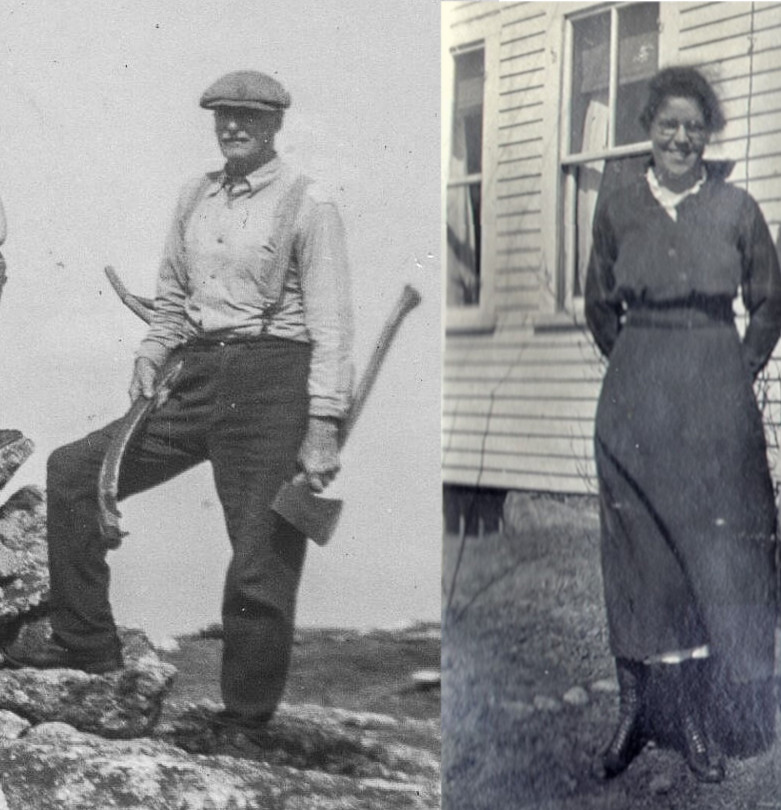
I can remember taking them down to Binney Hill Road, and they came through over the mountain. I went back to the farm, Mable put up a lunch and I came over to where the old Brown place was where we built the [Wapack] Lodge later. I went up on the mountain and met them with their dinner. Two or three days later they did the same thing over the Temple Mountain Range. Then Frank and I began laying out trails from Watatic. We started at Watatic; we did this Sundays. When we were busy with cattle during the week we could take Sunday’s off.
We just about completed the layout of the trail that year and then Arthur Comey— he was a city planner for the city of Boston—and a very active member of the Appalachian [Mountain] Club. He came up to see us one day. He had been hiking around and had discovered the trail and he said he thought it would be wonderful if they had a ski trail go through on it too. He asked if we objected and Mr. Robbins told him, “No, go ahead”.
Well, having a trail was the incentive of having a place to put folks up overnight. For years Alice [Marion’s Sister] had been at me to go in with her on a tearoom business somewhere. Frank said, “All right, we’ll start and build on the old Brown cellar hole”. It was in 1923 that we started in cleaning out the cellar hole. That fall he and I cut timber down at the old Peppermint then some up on the side of Mt. Grin and we hauled it down to where the Lodge was. It’s a strange thing but right off that fall a mill set up right down by the old Peppermint. They had a portable sawmill down there and Frank went down to see if they would cut our lumber. They said yes they would saw it out for us if we got it down there. So we got it down the road and they took it down to the mill, sawed out as Frank had marked it for us. They even brought it back up to the side of the road. We had to bring it up to the Lodge and “stick it up” so it could dry.
Then next spring he hired a planer of Harris Rice and drew that over there. We had two tents … that we set up over this planer rigging. We rigged up a little splitting saw arrangement besides and we planed that lumber, the dimension stuff and the boards.
With two horses and a tipcart from the farm we cleaned out the cellar—two tipcarts full of dirt and debris we took out of that old cellar—the old Brown place. Then we went to work, layed the sills and so forth, got a framework up for a house. We didn’t board the first floor at all; just got the framework up for a bungalow that was 30’ wide by 40’ long. …
December 8, it had got to be pretty cold weather— we put the roofing paper on. The night before Frank had brought those rolls of roofing paper to the kitchen at the farm and set them up around the kitchen stove to warm. Then we took it out and put it into the Model T, covered it with blankets and headed for the Lodge. And do you know we got the whole of that roofing paper on that roof on that day, nailed on. In the spring after the planting was done we went over there to work on that building. … a phoebe had built her little nest up in one corner of that building and hatched out her babies. That kept it interesting. I had a 3-burner kerosene stove and I stayed there and worked laying the flooring. Then I began putting in the windows… .
– Marion Davis
(Full transcript available at the New Ipswich Historical Society)
Fond Memories of the Wapack Lodge
When I heard that the Wapack Lodge had burned to the ground a flood of memories rushed to my head. It was a special treat during my childhood when it was announced that we five Buck children were “going to Aunt Marion’s”. We all piled into the car, and we made that long trip from Fitchburg to New Ipswich. As soon as my Dad parked at the kitchen door of the Lodge we lept out and ran into the kitchen for a hug from Marion and a joke with Uncle Frank Robbins. He had knicknames for each of us. I was “Constantinople”, and my brother Buddy was “Budweiser Beer”. Usually the kitchen smelled of baking bread and roasting chicken, and we nearly always left with a fistful of cookies.
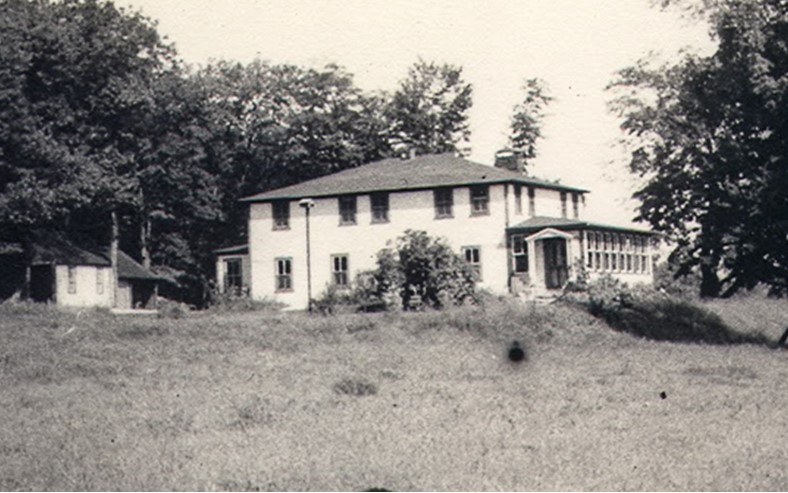
From there we went by car or on foot past the Annex (built when the 2-story lodge could not accommodate all the guests) up through the blueberry pasture to the evergreen cathedral of towering trees. There the seven of us ate my mother’s huge lunch and began thinking of excuses for not having to pick the required pail full of blueberries before we could play. Since more berries went into our mouths than pails I doubt if any of us ever picked enough to make a difference. Sometime I brought a friend, and we played dolls while the three boys hid and hunted among the trees as cowboys and Indians. That entire forest blew down in the 1938 hurricane at the same time it knocked down the Lodge garage and took the roof off a cabin on the hilltop behind the Lodge.
The Lodge may be gone but fond family memories will always be with me.
– Connie Hall (1993)
Memories of Marion Davis – by her younger brother
Marion was an exceptionaly outgoing, friendly, pleasant person. From the time she was a young girl she would organize games or activities and was very good at it. Two of the games were “Run, my good sheep, run”, where you would chase one another through the fields and woods, and “Duck on the rocks”, where you would place a stone on top of a boulder and try to knock it off by throwing stones at it.
At one time she organized and produced a minstrel show. She planned it and even wrote the parts for the various participants. There was an interlocutor and the show was staged on the lawns of Catherine Otto’s. It was a great success and Marion directed and planned it. Marion was also a member of the Seven Member Sewing Club that met weekly at each other’s homes.
There were woods across the road from our house. Marion got together some of us, neighbors and family, and we took hatchets to cut saplings and brush to form a house with rooms. It was used and enjoyed my many, usually under Marion’s direction. Marion’s sister Alice remembers that some of the saplings took root.
Marion loved the outdoors and was a strong believer in self-reliance and fairness. She was one of the active players on our neighborhood baseball team. I remember once when one of the neighbor’s boys began to abuse another child and Marion told him to stop. He didn’t, so Marion forcefully and firmly stopped him.
Marion bought a small flock of sheep, partly to keep weeds and grass from growing too tall, but also for meat for the table at the Wapack Lodge. One night some dogs attacked and killed some of the sheep. Marion was devastated and decided to sell the remaining sheep. She used the sheep’s pelts to make powder puffs, many of which were sold at state fairs.
Marion was always smiling, good natured and made many friends.
– Walter E. Buck, Sr. (1999)
